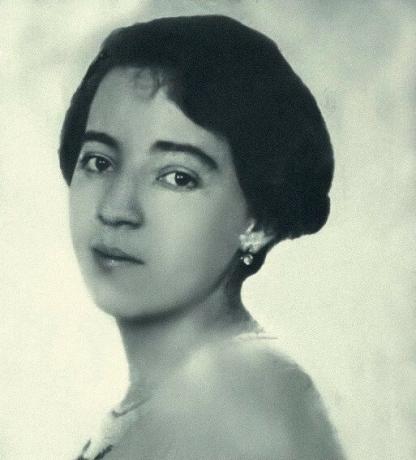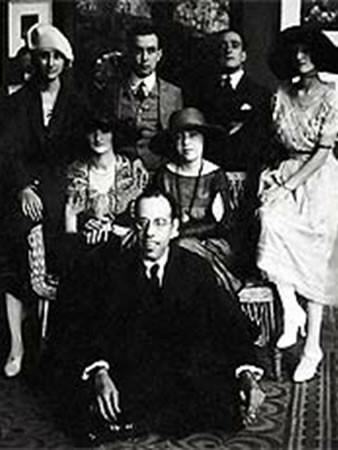Anita Malfatti, Brazilian painter, was born on December 2, 1889, in São Paulo. She learned to paint from her mother. However, the artist studied, in 1914, at the Imperial Academy of Fine Arts, in Germany, and, in 1915 and 1916, at the Arts Students League of New York and the Independent School of Art, in the United States. His first solo exhibition took place in 1914, in São Paulo, but that of 1917 is the most famous, due to its importance to Brazilian modernism.
the artist participated in the 1922 Modern Art Week, artistic event celebrating the centenary of iindependence of Brazil and responsible for disseminating new trends in Brazilian art, that is, modernism, a movement that broke with traditional art to create modern, innovative, independent and national art. So, the screen maker the yellow man had its heyday in modernism, but with her artistic maturity, she chose to make art more spontaneous, with themes based on popular culture, until her death, on November 6, 1964.
Read more: Modernism in Brazil - movement that broke with the traditional style
Biography of Anita Malfatti

Anita Malfatti born on December 2, 1889, in Sao Paulo. Her mother, Bety Malfatti (1866-1952), taught her to paint. However, the young painter had atrophy in her arm and right hand, and as a result she developed the skill of the left hand with which she painted. His first remaining paintings date back to 1909. The following year, the painter moved to germany, where he remained until 1914. in this country studied at the Imperial Academy of Fine Arts, in addition to having contact with expressionism.
In the years 1915 and 1916, Anita Malfatti lived in New York, where she studied at the Arts Students League of New York and the Independent School of Art. Although her first solo exhibition took place in 1914, in São Paulo, the painter only became known in 1917, due to a negative review by the writer Monteiro Lobato (1882-1948). In any case, modernist painting, of which Anita Malfatti is considered the precursor, gained strength with the realization of the Week of Modern Art in 1922.
At that time, she was part ofgroup of five, a group of artists composed of:
- Tarsila do Amaral (1886-1973),
- Mario de Andrade (1893-1945),
- Oswald de Andrade (1890-1954)
- Menotti del Picchia (1892-1988).
in 1923 went to study in Paris, and she only returned to Brazil in 1928 to teach drawing and painting. Since then, the artist has been relatively moving away from modernism.
Painter, draftsman, engraver, illustrator and teacher Anita Malfatti participated in the Sociedade Revolucionario Salon Pró-Arte Moderna, from the Salão Paulista de Belas Artes and, in 1937, he joined the São Paulo Artistic Family, in addition to becoming President of the Plastic Artists Union of São Paulo, in 1942. Thus, from the 1940s onwards, the painter began to produce a painting more focused onpopular culture. she died inNovember 6, 1964, in Sao Paulo.
Artistic style by Anita Malfatti
Anita Malfatti was a Brazilian modernism artist, period style inaugurated at the Week of Modern Art in 1922. This movement performed a break with traditional art, that is, academic art, with the aim of creating an independent and national art. Thus, the nationalism it was one of the main characteristics of Brazilian modernism, a movement that, at first, was very centered on the urban context.
The exhibition by Anita Malfatti, in 1917, is considered by scholars as one of the main artistic events that led to the realization of the 1922 Modern Art Week. Therefore, the artist was a precursor, in Brazil, from the "new art" or modern art, which had its peak between the years 1922 and 1930, the most radical period of the movement, the “phase of destruction”.
O modernism in Brazil was influenced by European vanguards, that is, from movements such as:
- Cubism
- futurism
- Dadaism
- Surrealism
- Expressionism
Mainly in the plastic arts, characteristic features of these movements can be identified. So, initially, Anita Malfatti, influenced by expressionism, printed marks of this aesthetic in his works.
In the works of this early period, it is possible to observe a experimental work with light, in the abandonment of the traditional chiaroscuro technique. The artist was not concerned with the faithful representation, that is, naturalist, of reality. Images with thick, undulating contours can also be identified. In addition nationalist theme made himself present, as in the work Tropical, 1917.
However, even in the 1920s, Malfatti began to move away from modernism, without, however, breaking with the movement. the painter interested in the fauvism, that is, it started to use more intense colors, walked to the regionalist theme, returned to dialogue with classical painting and, finally, sought to express himself in a more original way. At the height of his maturity, his painting reached spontaneity, independence from aesthetic movements, and began to privilege themes of popular culture.
Read too: Pablo Picasso – the greatest highlight of cubist painting in the world
Modern Art Week

In celebration of the centenary of Brazil's independence, young Brazilian artists decided to make a event to present new trends in Brazilian art, influenced by the European vanguards. Thus, from February 13th to 18th, 1922, the Week of Modern Art took place at the Municipal Theater of São Paulo. There, exhibitions, conferences and concerts were held, with the presence of artists such as:
- Oswald de Andrade
- Guilherme de Almeida (1890-1969)
- Menotti del Picchia
- Mario de Andrade
- Hector Villa-Lobos (1887-1959)
- Anita Malfatti
the week was inaugurated on February 13, 1922, with the lecture by writer Graça Aranha (1868-1931). On the second night, Ronald de Carvalho (1893-1935) read the poem the frogs, in Manuel Bandeira (1886-1968). The poem was booed by the audience, made up of members of the São Paulo elite, used to traditional art. On the third night, Villa-Lobos performed in flip-flops, which provoked a rejection by part of the public. In addition, the conservative media also attacked the new movement that was emerging that, at first, was confused with futurism.
During the Week of Modern Art, Anita Malfatti contributed 20 works. Among them was his work the yellow man. It was, therefore, part of the beginnings of Brazilian modernism. Her paintings were among the 100 works exhibited at the event and shared the space with the works of the following artists:
- Di Cavalcanti (1897-1976)
- Ferrignac (1892-1958)
- John Graz (1891-1980)
- Vicente do Rego Monteiro (1899-1970)
- Zina Aita (1900-1967)
- Yan de Almeida Prado (1898-1991)
- Antonio Paim Vieira (1895-1988)
See too: Van Gogh – Dutch Canon of 19th Century Painting
Works by Anita Malfatti
![1989 stamp, which reproduces the canvas O Homem Amarelo [The Yellow Man], by Anita Malfatti. [1]](/f/c81cc9c9bbde8a30c6e4c87f16bb27fb.jpg)
- The Forest (1912)
- Neapolitan Boy (1912)
- The Garden (1912)
- Portrait of a Teacher (1912)
- Academy (1912)
- My brother Alexandre (1914)
- Georgina (1914)
- The headlight (1915)
- The student (1915)
- the man of seven colors (1915)
- the russian student (1915)
- cubist nude noO 1 (1915)
- Channel (1915)
- Rocks, Monhegan Island (1915)
- Monhegan lighthouse (1915)
- The wave (1915)
- the silly (1915)
- the wind (1915)
- the green haired woman (1915)
- The boat (1915)
- Torso/Rhythm (1915)
- the yellow man (1915)
- the japanese (1915)
- Tropical (1917)
- Lalive portrait (1917)
- reclining nude (1920)
- the bullfighter (1921)
- Mario de Andrade I (1921)
- the group of five (1922)
- self portrait (1922)
- Fernanda de Castro (1922)
- Portrait of Mario de Andrade (1922)
- Almeida's baby (1922)
- Venice, canal (1924)
- the japanese (1924)
- Port of Monaco (1925)
- la chambre bleue (1925)
- Monaco interior (1925)
- Landscape of the Pyrenees: cauterets (1926)
- Chanson de Montmartre (1926)
- la rentrée (1927)
- woman from para (1927)
- Portrait of A.M.G. (1933)
- Nonê's portrait (1935)
- Landscape (1940)
- The poet (1943)
- poppies (1945)
- Itanhaém (1948)
- Landscape of Ouro Preto (1948)
- Medallion (1950)
- Girl with blue ribbon (s. d.)
- The peasant (s. d.)
- Naked d.)
- Cubist composition(s. d.)
- Trees (s. d.)
Image credit
[1] nephthali / Shutterstock
by Warley Souza
Literature teacher
